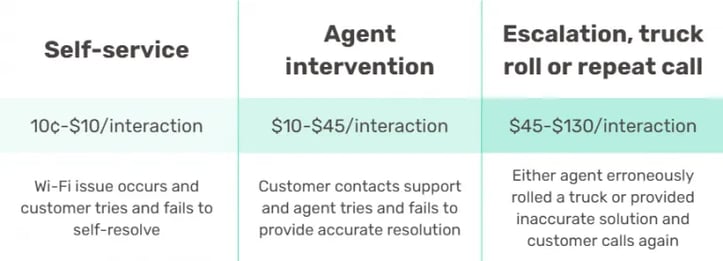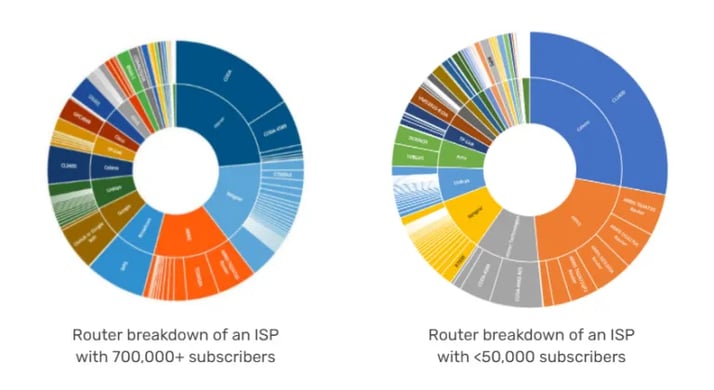Event recap: Talking diagnostics, OPEX with WISPA

Late last week, we held an exclusive event with WISPA to talk about the major issues facing WISPs in the modern internet landscape—from accessing and properly using diagnostics to strategies for reducing OPEX and more.
Our panel of experts, featuring Sebastian Ivanisky of VTX1 and our own CEO and co-founder, Jason Moore, came together to discuss the issues at hand, and strategies that WISPs can use to manage experiences and expenses.
In case you weren’t able to attend, here’s a quick recap of the session—and don’t forget to check out the full recording here.
The problem with existing troubleshooting methods
First up, our session discussed the problems that face WISP support teams. And to understand that, we first need to look at the steps that happen on a support call.
As Moore explained, many of these steps happen before a call ever comes through.
The vast majority of internet customers will try to solve issues on their own—but that becomes problematic because most aren’t tech-savvy, and because not all tools provided are useful. This then translates into increasingly expensive agent intervention and tech visits because the customer will typically misdiagnose the issue as an internet issue, rather than a WiFi issue, and blame their WISP for the problem.

Then, when they do call in, agents run into a second major problem: Diagnostics. Even if the customer has customer premise equipment (CPE) in their home, there’s a chance that the device is too old to be of much help. And to add to that, 36% of customers will bring their own devices anyway.
Why CPE-based diagnostics are problematic
Naturally, it’s difficult to understand what’s happening on a network without first understanding that network. But as Moore and Ivanisky explained, the issue is that for many ISPs and WISPs, it’s difficult at best to understand that network.
To get a better understanding of these networks, ISPs turned to solutions like CPE and fiber to help diagnose issues. But as we mentioned above, these solutions introduce new problems over time—including fragmentation.
As Moore highlighted, when ISPs and WISPs introduce managed devices into customers’ homes, it does provide some visibility. But these rollouts can take years to complete, and that time extends every time you add a new customer. By the time it’s finished, that ISP might need to switch vendors, or replace a device with a new model.
Every time that happens, your base splits into those who have, and those who have not. Eventually, this is what your customer base ends up looking like.

What’s the solution?
Ultimately, WISPs need tools that can both offer useful diagnostics—and can translate those diagnostics into root-cause steps that agents and customers alike can follow.
That’s not to mention the issues of negative word of mouth, reviews, customer churn, and more.
So what’s the answer?
As our panel shared, the answer to WiFi QoE issues comes down to visibility.
As Ivanisky discussed, it’s especially important for WISPs to consider how solutions like this contribute to the overall customer experience, both on calls and through self-service options. Managed WiFi can help support teams find issues and resolve them for customers, but there’s another solution that Ivanisky uses to significantly reduce the calls that come in—including the insidious day-after calls.
In our case, we’ve managed to take WiFi troubleshooting to a level that would only be possible if every single one of those routers was one we owned—which is not the case, and it’s increasingly difficult to ever consider it being the case.
Sebastian Ivanisky, VTX1
As Ivanisky explained, reaching the end goal of fully managed WiFi is expensive—both in terms of costs and time. In some cases, ISPs and WISPs will give away managed devices to encourage customers to take them, which piles onto the costs of a rollout. But because the team at VTX1 uses RouteThis, they’ve been able to reach that end goal much faster, and without the extra costs.
